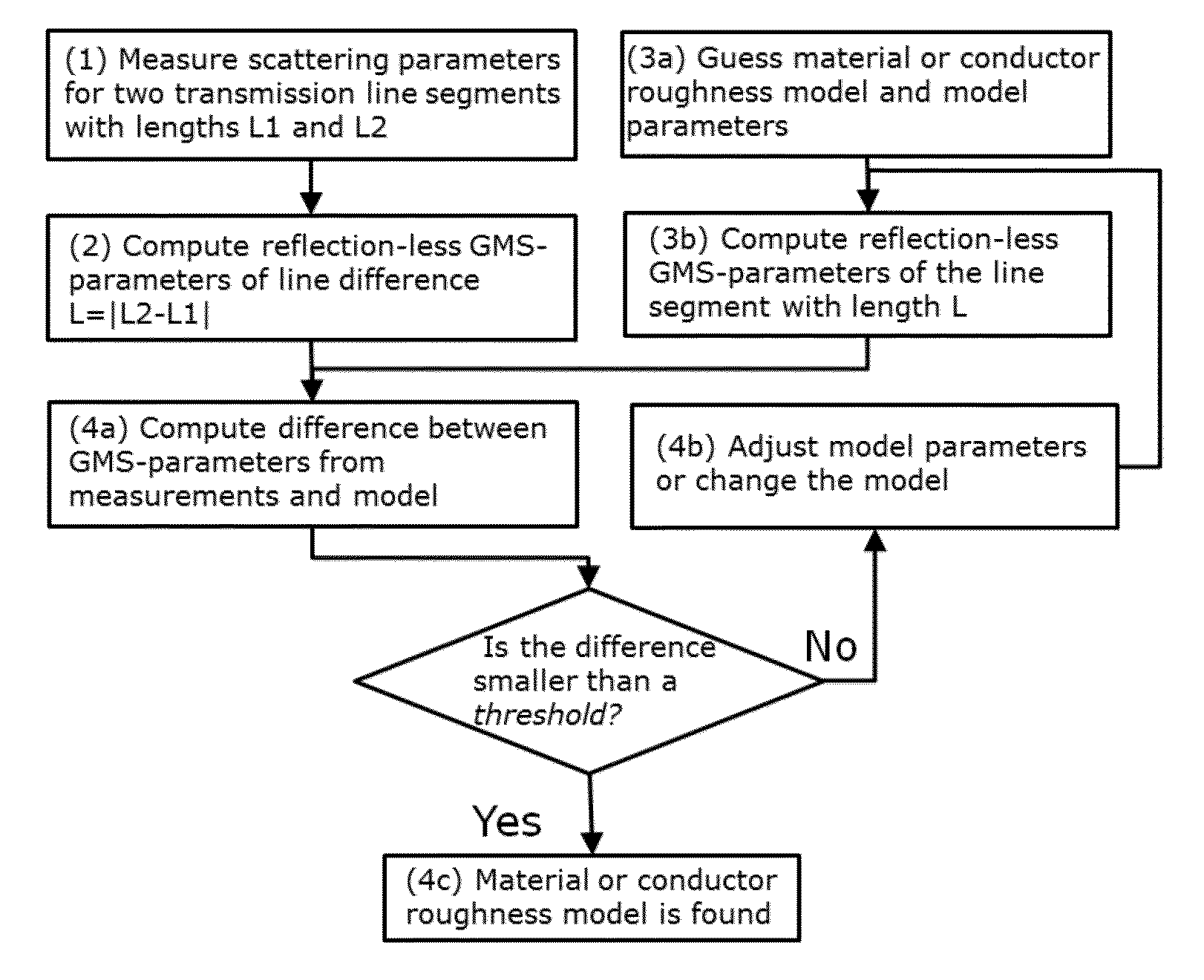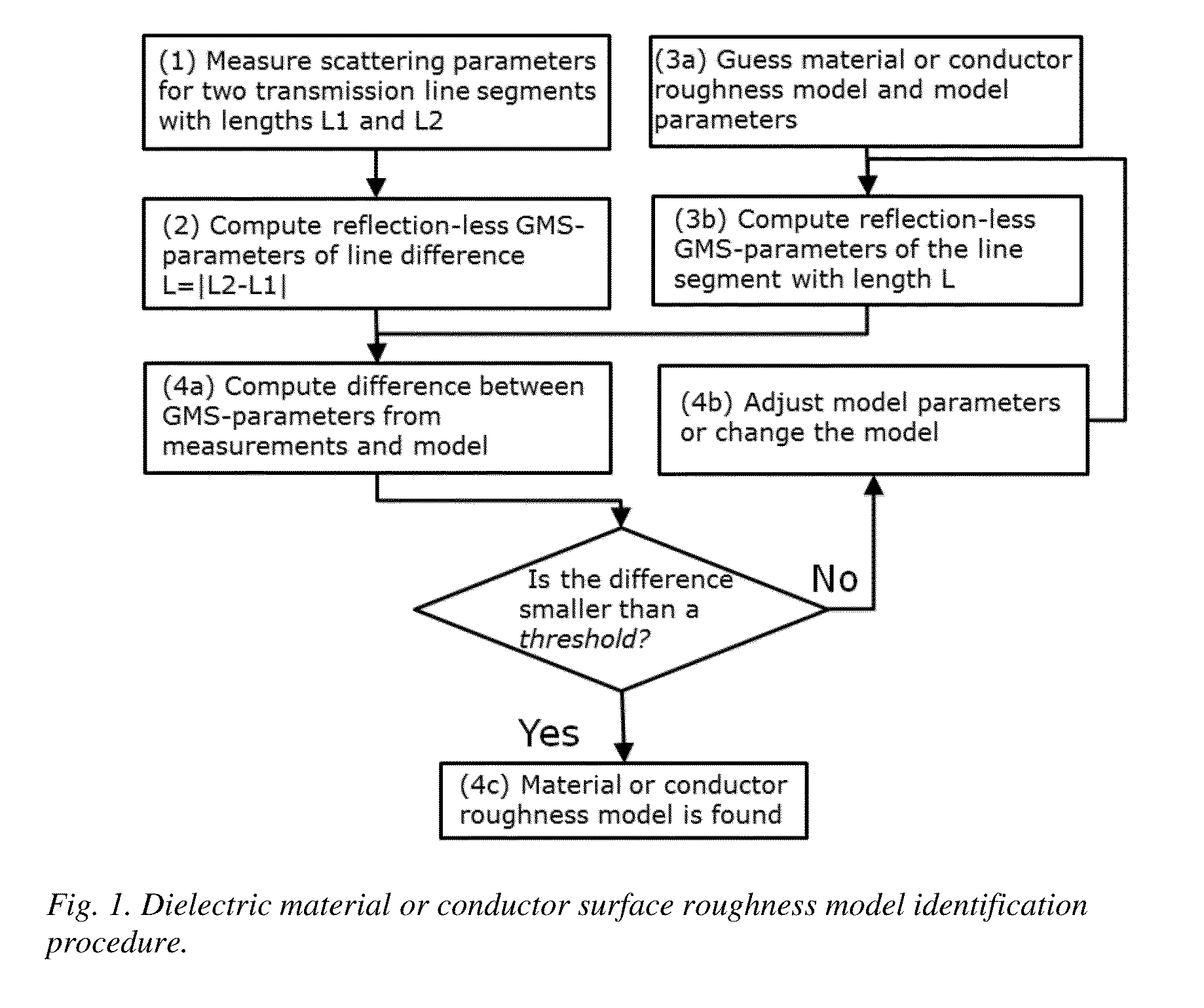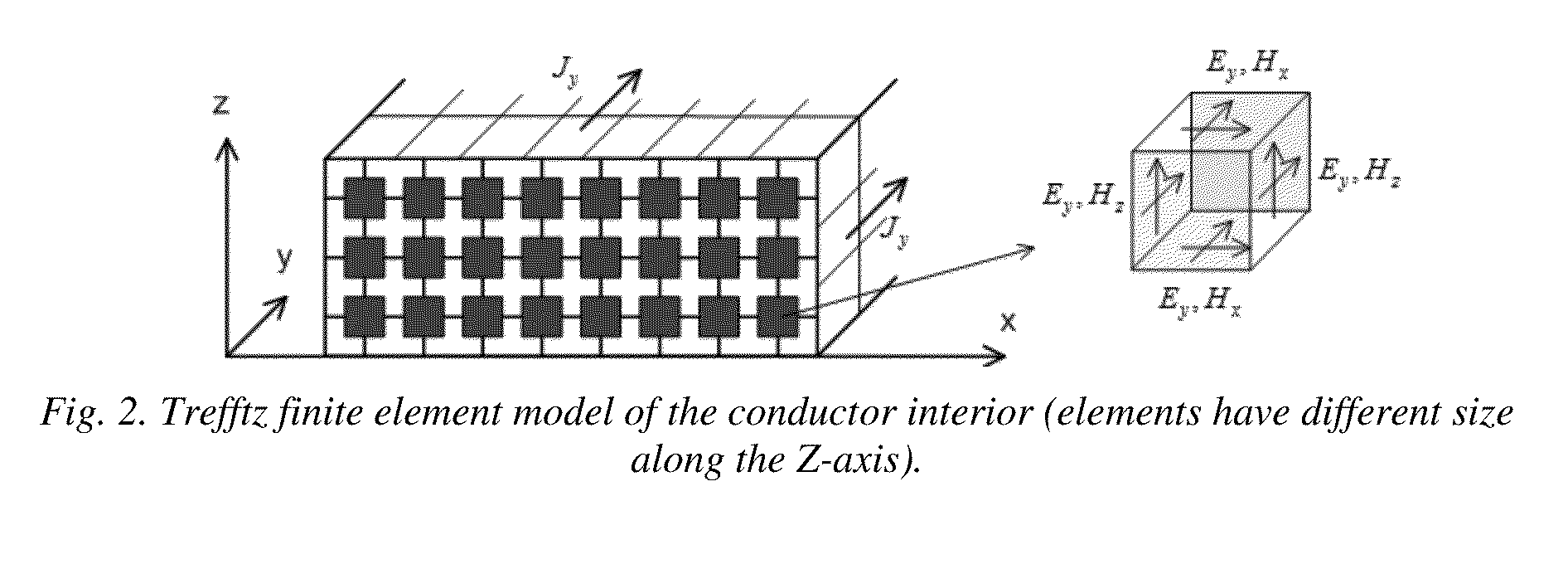System and method for identification of conductor surface roughness model for transmission lines
a technology of conductor surface roughness and identification method, which is applied in the direction of instruments, wave/particle radiation means, design optimisation/simulation, etc., can solve the problems of signal degradation, difficult to define the model parameters for any particular case, and the manufacturers of pcb copper foils do not provide electrical characterization data for pcb copper roughness
- Summary
- Abstract
- Description
- Claims
- Application Information
AI Technical Summary
Benefits of technology
Problems solved by technology
Method used
Image
Examples
Embodiment Construction
Invention Components
[0027]1) Network analyzer such as Vector Network Analyzer (VNA) or Time-Domain Network Analyzer—an apparatus that measures complex scattering parameters (S-parameters) of a multiport structure.[0028]2) At least two transmission line segments with substantially identical cross-section and conductor roughness profile. One or multi-conductor strip or microstrip line, coplanar waveguide or any other line type can be used. Two segments must have different lengths—one segment is shorter and another is longer. Geometry of the cross-section and models for all line dielectrics must be known (separately identified or from specifications). Both segments are equipped with either coaxial connectors or conductive probe pads to measure S-parameters over a given frequency range.[0029]3) Calculator (first engine) of non-reflective or generalized modal S-parameters of line segment difference from two sets of S-parameters measured for two line segments.[0030]4) Calculator (second e...
PUM
 Login to View More
Login to View More Abstract
Description
Claims
Application Information
 Login to View More
Login to View More - R&D
- Intellectual Property
- Life Sciences
- Materials
- Tech Scout
- Unparalleled Data Quality
- Higher Quality Content
- 60% Fewer Hallucinations
Browse by: Latest US Patents, China's latest patents, Technical Efficacy Thesaurus, Application Domain, Technology Topic, Popular Technical Reports.
© 2025 PatSnap. All rights reserved.Legal|Privacy policy|Modern Slavery Act Transparency Statement|Sitemap|About US| Contact US: help@patsnap.com



